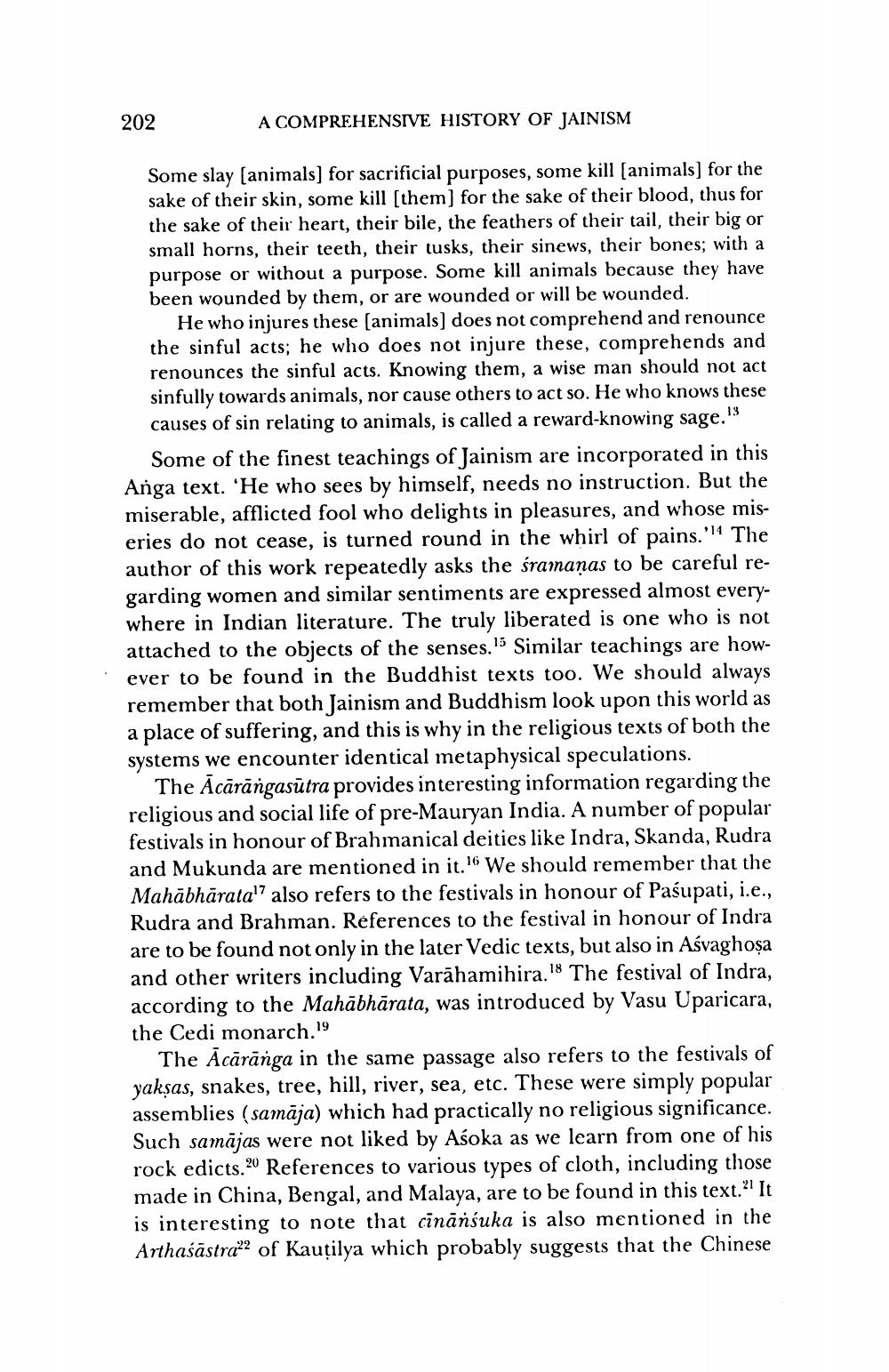________________
202
A COMPREHENSIVE HISTORY OF JAINISM
Some slay (animals) for sacrificial purposes, some kill (animals) for the sake of their skin, some kill (them) for the sake of their blood, thus for the sake of their heart, their bile, the feathers of their tail, their big or small horns, their teeth, their tusks, their sinews, their bones; with a purpose or without a purpose. Some kill animals because they have been wounded by them, or are wounded or will be wounded.
He who injures these (animals) does not comprehend and renounce the sinful acts; he who does not injure these, comprehends and renounces the sinful acts. Knowing them, a wise man should not act sinfully towards animals, nor cause others to act so. He who knows these causes of sin relating to animals, is called a reward-knowing sage."
Some of the finest teachings of Jainism are incorporated in this Anga text. 'He who sees by himself, needs no instruction. But the miserable, afflicted fool who delights in pleasures, and whose miseries do not cease, is turned round in the whirl of pains.'l1 The author of this work repeatedly asks the śramanas to be careful regarding women and similar sentiments are expressed almost everywhere in Indian literature. The truly liberated is one who is not attached to the objects of the senses. 15 Similar teachings are however to be found in the Buddhist texts too. We should always remember that both Jainism and Buddhism look upon this world as a place of suffering, and this is why in the religious texts of both the systems we encounter identical metaphysical speculations.
The Ācārāngasūtra provides interesting information regarding the religious and social life of pre-Mauryan India. A number of popular festivals in honour of Brahmanical deities like Indra, Skanda, Rudra and Mukunda are mentioned in it. We should remember that the Mahābhārata' also refers to the festivals in honour of Pasupati, i.e., Rudra and Brahman. References to the festival in honour of Indra are to be found not only in the later Vedic texts, but also in Asvaghosa and other writers including Varāhamihira." The festival of Indra, according to the Mahābhārata, was introduced by Vasu Uparicara, the Cedi monarch.19
The Acārānga in the same passage also refers to the festivals of yakşas, snakes, tree, hill, river, sea, etc. These were simply popular assemblies (samāja) which had practically no religious significance. Such samājas were not liked by Aśoka as we learn from one of his rock edicts.20 References to various types of cloth, including those made in China, Bengal, and Malaya, are to be found in this text.?! It is interesting to note that cināńsuka is also mentioned in the Arthasāstra2 of Kautilya which probably suggests that the Chinese




